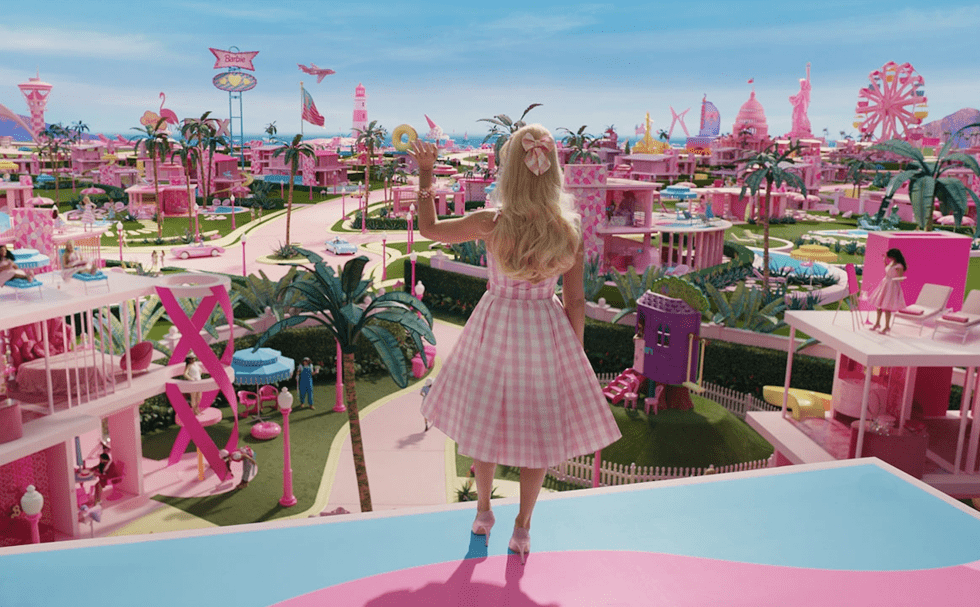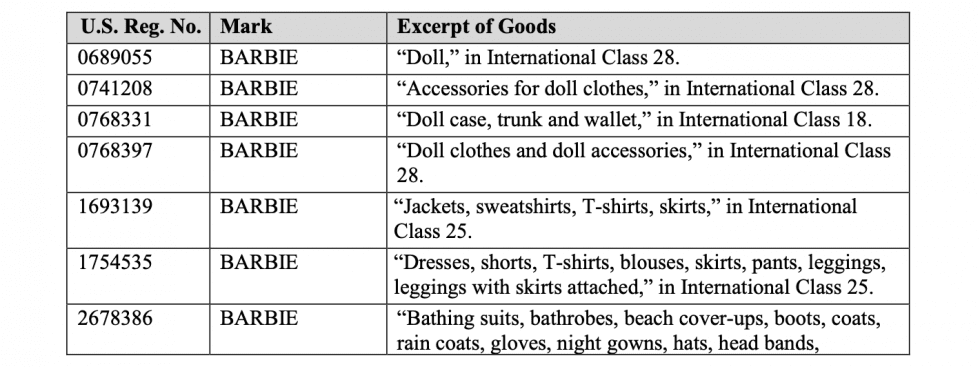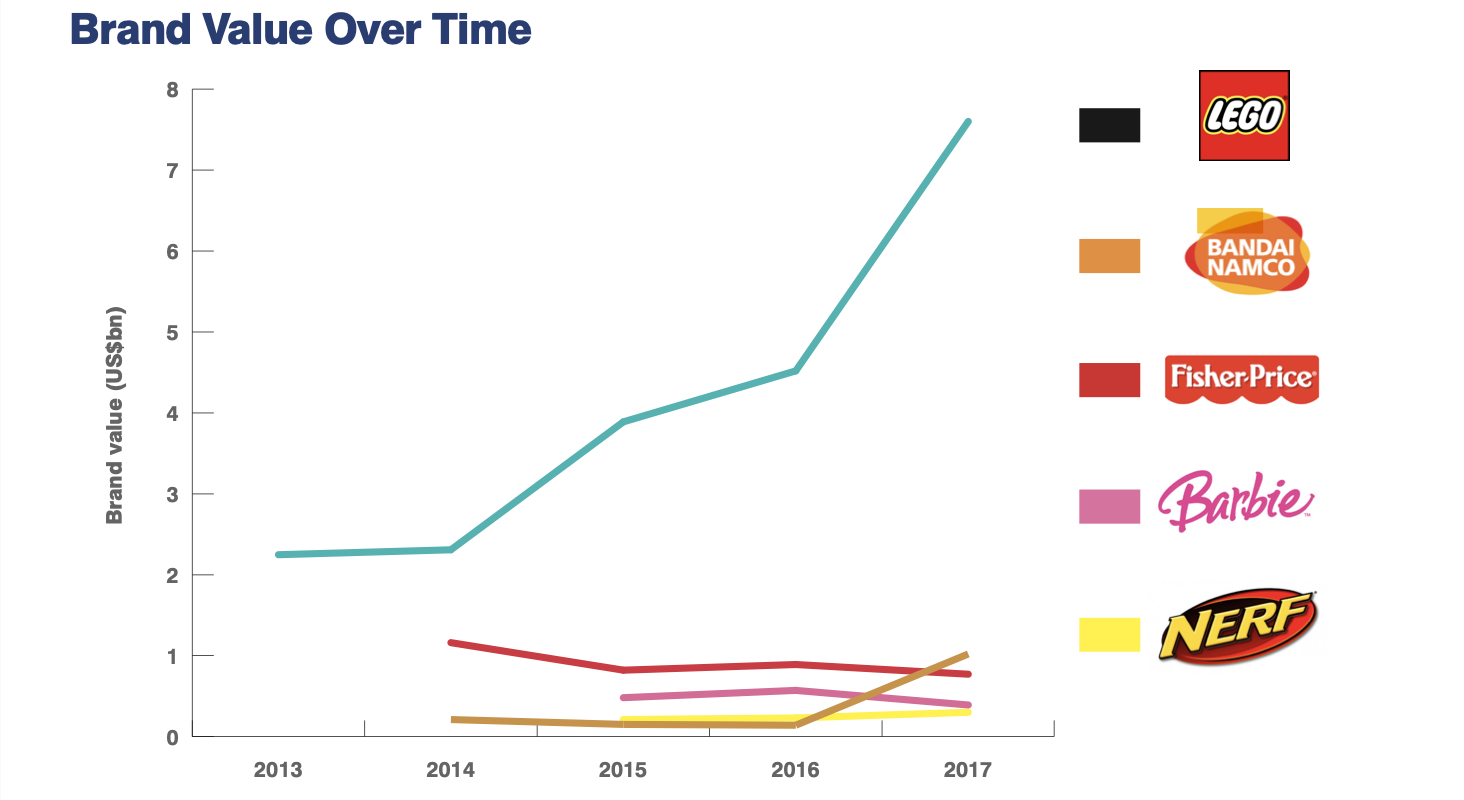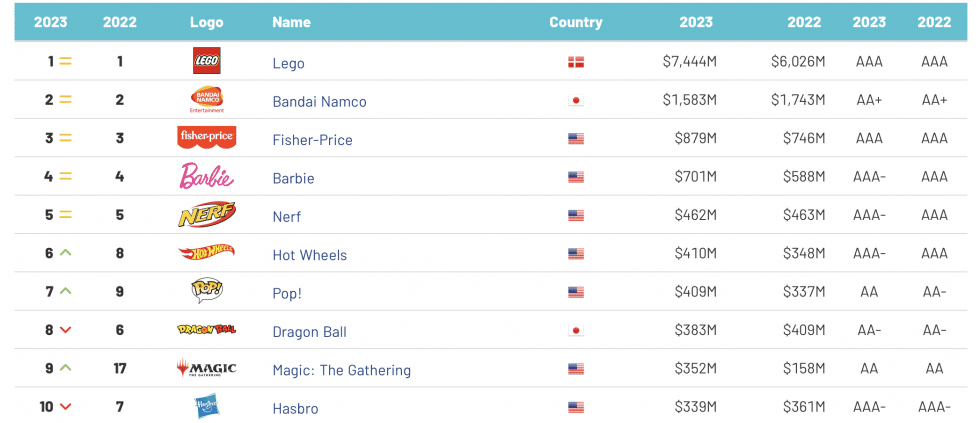The potential opposition that I mentioned in this article last week happened: Mattel is looking to block Burberry’s bid to register the BRBY word mark for use on various types of bags and clothing/outerwear. According to Mattel, BRBY – a potential nod to the brand’s London Stock Exchange ticker – is likely to confuse consumers due, in part, to the similarities in “appearance, sound, and commercial impression” between it and the BARBIE trademark. Confusion is also likely to abound, per Mattel, due to the dearth of vowels in Burberry’s mark, which will leave consumers without a “guide [as to the] pronunciation.” Or as one of TFL’s Twitter followers stated this week, “I feel like the main risk of confusion with BRBY is that no one will have any freaking idea what it’s supposed to be, not that people will think it’s about Barbie.” (For a counter-point, do we think people understand what the VLTN on this bag refers to?) I delve into all of that – as well as the interesting role that timing plays in connection with the opposition – in this article.
Mattel’s opposition coincides with a big push by the Southern California-based toy company to bank on the Barbie brand in connection with its July 21 release of the major motion picture of the same name with Warner Bros. Not only is the Greta Gerwin-directed, Margot Robbie-starring film expected to be the biggest – and most-anticipated – movie of the summer (opening weekend ticket sales are projected to reach $55 million), but Mattel is also looking to rake in cash from deals that turn on its famous BARBIE trademarks.

The Barbie film – which was first announced back in 2021 and has been shrouded in some level of mystery since – raises the stakes for Mattel, including the influx of authorized collaborations/licensing deals that Mattel has entered into with other brands. Reflecting on the potential here, Josh Silverman, the chief franchise officer and global head, consumer products at Mattel, said earlier this month that the movie “creates incredible fanfare for our partners and consumers, alike,” which Mattels is actively manifesting into a “multitude of new ways Barbie fans worldwide can celebrate this iconic moment.” The ramping up of collabs started months ago, and as of now, they will see (or are already seeing) Mattel partner with Spirit Halloween Superstores for costumes; Alex and Ani for jewelry; Truly for cosmetics; Loungefly for accessories; MeUndies for undergarments; beverage startup Swoon for drinks; and FUNBOY for pool floats.
Additional Barbie-themed tie-ups come by way of Gap, Forever 21, Aldo, Hot Topic, Primark, Impala Rollerskates, and the list really does go on and on.
Also in the pipeline: Barbie-themed Monopoly games, which are set for release in the fall and which stem from a larger, multi-year licensing deal that Mattel and fellow toy/game purveyor Hasbro announced in April. “We are excited to pair some of the most popular brands together for the first time,” said Nick Karamanos, SVP of Entertainment Partnerships at Mattel. “This collaboration features world-class IP, celebrates the timeless appeal of these brands, and creates unique play opportunities for fans.” News of the deal – the terms of which have not been disclosed – sent both companies’ share prices up this spring, a nod to the market’s optimism about the value of the relevant IP at play.

For Mattel that IP is, in no small part, Barbie, for which (as it notes in its opposition against Burberry) it maintains robust trademark rights. A quick review of the U.S. Patent and Trademark Office’s database shows 70-plus active Mattel-owned registrations and/or pending applications for various BARBIE or “BARBIE-formative marks” (a few of which are shown above) for use on the obvious goods like “dolls, doll clothing and doll accessories,” “on-line retail store services featuring toys,” and corresponding apparel/accessories for humans. There are also things like “fruit-based snack foods,” band-aids, “cosmetics for use by little girls,” Halloween costumes, and “providing educational and entertainment services,” among other goods/services.
In short: Mattel is looking to parlay the rising relevance of brand Barbie and her domination of the zeitgeist into big-sized sales, which is a notable opportunity to make up for years of waning demand for/sales of the 64-year-old doll. Back in 2015, Mattel’s revenue for the Barbie franchise fell to $900 million, the lowest in 25 years, which prompted the company to go back to the drawing board. Things began to look up following the launch of Project Dawn in 2016, which saw Mattel release new Barbie dolls in seven different skin tones, 24 hairstyles, 22 eye colors, and three new body shapes. Barbie-specific revenue grew by 23 percent in the second quarter of 2016.
Fast forward to Q1 2023, the results for which Mattel reported on April 26, and worldwide gross billings for Barbie amounted to $176.9 million of Mattel’s total $911 million in billings, down 41 percent from Q1 2022. For a point of comparison, Hot Wheels’ billings were $244.9 million (up 1 percent year-over-year), while Fischer Price’s were $125.7 million. (Gross billings represent amounts invoiced to customers and do not include the impact of sales adjustments, such as trade discounts and other allowances.)
While Barbie sales may be down (along with sales across the toy industry, which is “look[ing] to rebound from challenges like pandemic quarantines and supply-chain issues for product manufactured in China that followed,” per THR), the value of the BARBIE brand is growing, according to some key estimations. Brand Finance’s most recent calculations, for example, put the value of Barbie brand-specific IP at $701 million. That landed Barbie in the number 4 spot on the London-based brand valuation consultancy’s 2023 Top Toy Brands list. That figure is up from $588 million in 2022, and way up from the $388 million valuation that Brand Finance assigned to it in 2017 when the brand value appeared as though it might be primed to fall even further.

The outlier for Barbie’s recent upward brand trajectory is the slight downgrade in “Brand Strength” – from AAA in 2022 to AAA- in 2023. Brand Finance evaluates “marketing investment, stakeholder equity, business performance, corporate reputation,” etc. in order to determine the “strength” of a brand; this is distinct from brand “valuation,” which it defines as the value of the “names, terms, signs, symbols, logos, and designs” that a company uses to identify and distinguish its “goods, services or entities” from those of others.

One note in passing here is, of course, the potential risks of the onslaught of all things Barbie. “This is a risky endeavor if the brand is stretched too far,” according to Sameer Hosany, a Professor of Marketing at Royal Holloway University of London. While overextension and the resulting dilution are issues that have to top of mind for luxury brands, Mattel may be able to pull this off – and sell everything from Barbie Pink Lemonade drinks to Barbie bras. After all, “Barbie’s brand has been successfully extended [beyond toys] into other profitable categories, such as clothes, accessories, cosmetics and entertainment (music, movies and games), before,” Hosany says. With a big budget film and demand across multiple demographics, Mattel may be in for a very big pay day.